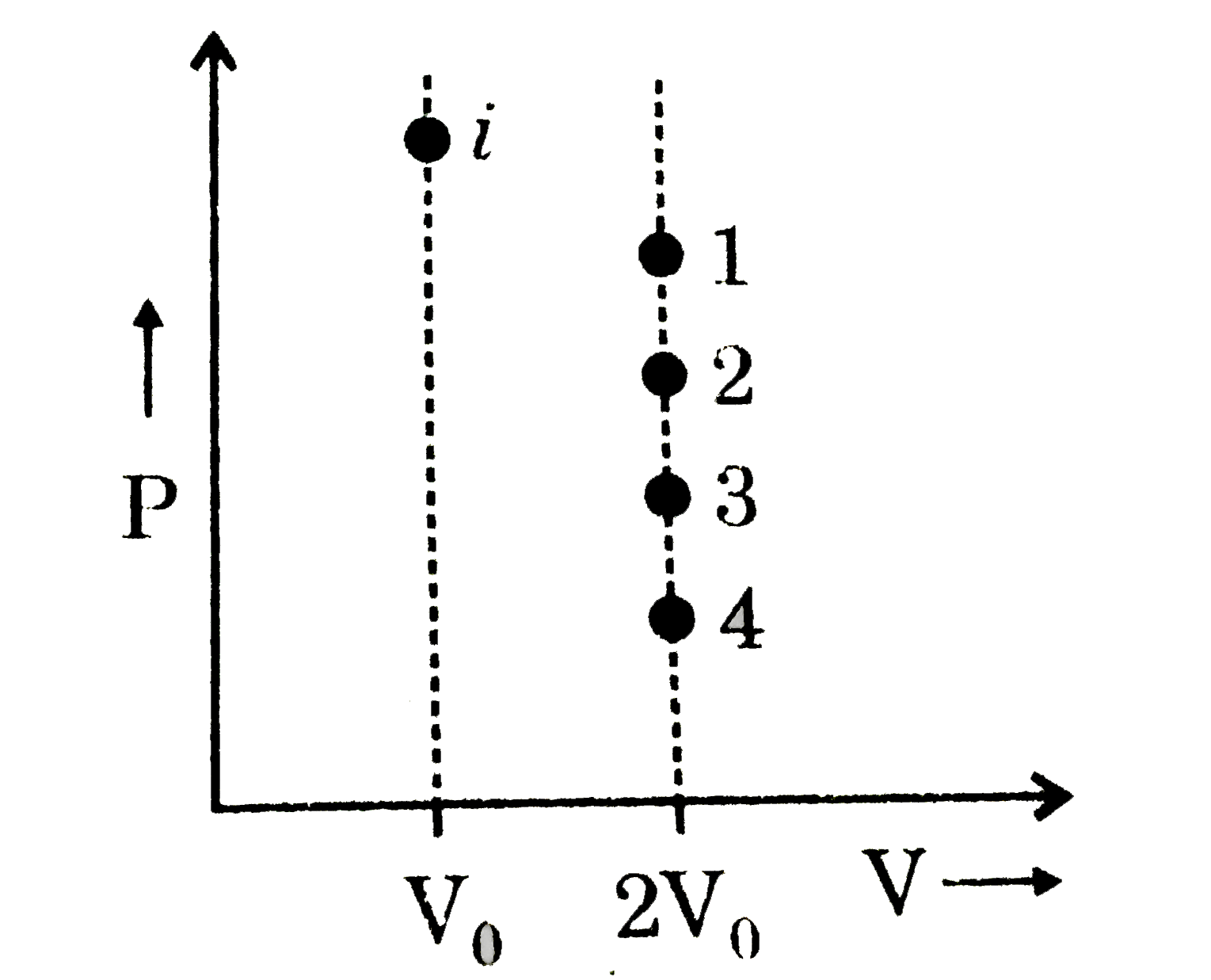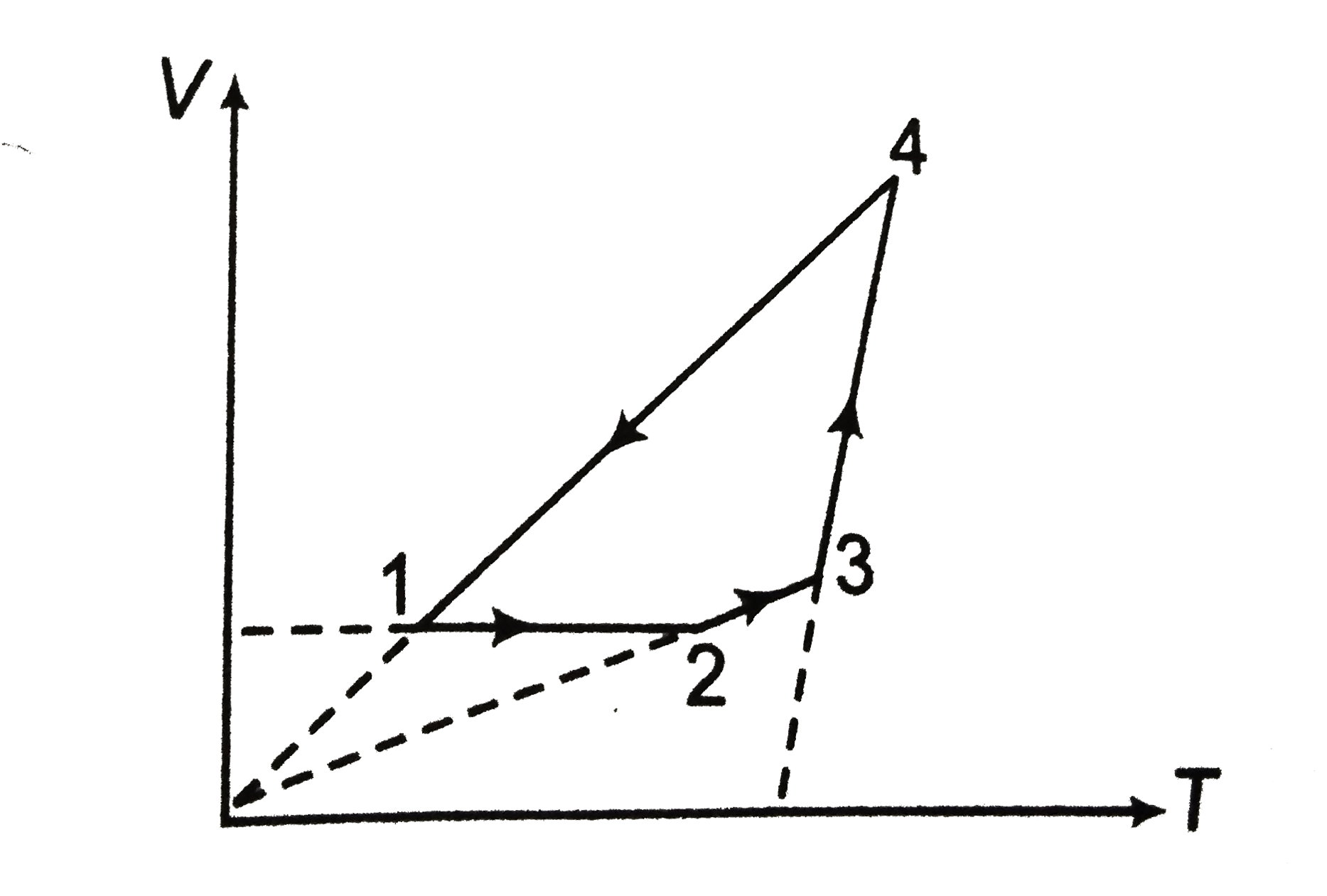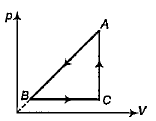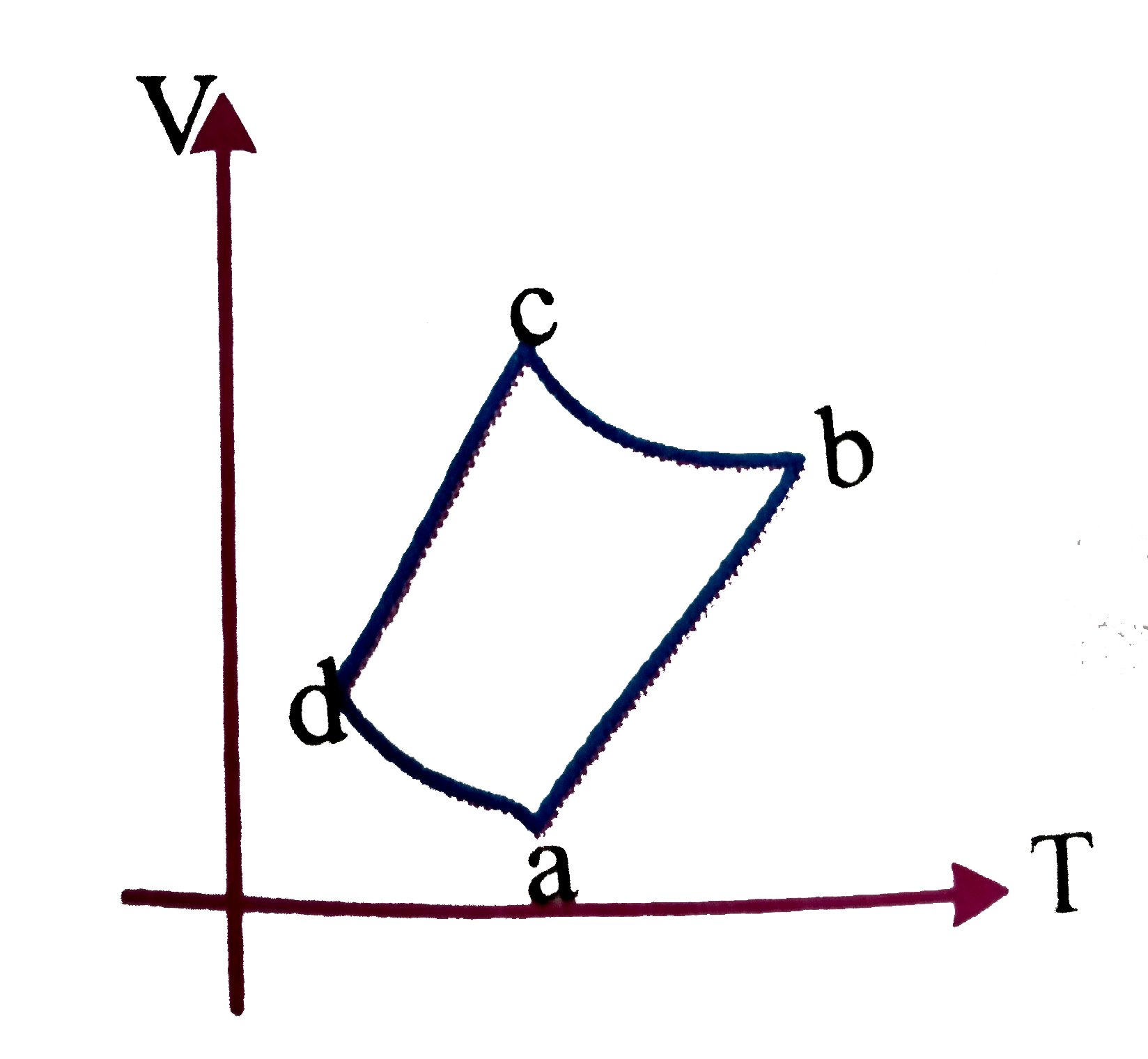Draw p-V diagram of reversible process.
To draw the p-V diagram of a reversible process, specifically an isothermal process, we can follow these steps:
1. Understand the Concept of Reversible Process:
- A reversible process is one that can be reversed without leaving any change in the system and surroundings. In thermodynamics, an isothermal process (constant temperature) is often considered reversible.
Hint: Remember that a reversible process is ideal and can be reversed without any net change.
2. Use the Ideal Gas Law:
- The ideal gas law is given by the equation PV=nRT, where:
- P = pressure,
- V = volume,
- n = number of moles,
- R = universal gas constant,
- T = temperature (constant for isothermal processes).
Hint: The ideal gas law relates pressure, volume, and temperature for an ideal gas.
3. Express the Relationship:
- For an isothermal process, since temperature T is constant, we can denote nRT as a constant k. Therefore, we can rewrite the equation as:
PV=k
- Rearranging gives:
P=kV
- This indicates that pressure P is inversely proportional to volume V.
Hint: Recognize that the relationship P=kV indicates a hyperbolic relationship.
4. Sketch the p-V Diagram:
- On a graph, plot pressure P on the y-axis and volume V on the x-axis.
- The graph of P versus V will be a hyperbola, which approaches the axes but never touches them. This is characteristic of an isothermal process.
Hint: The shape of the graph will be a hyperbola, reflecting the inverse relationship between pressure and volume.
5. Label the Diagram:
- Clearly label the axes: the vertical axis as P (Pressure) and the horizontal axis as V (Volume).
- You may also indicate that this curve represents an isothermal process at a constant temperature.
Hint: Labeling the axes and the curve helps in understanding the relationship depicted in the diagram.
Final Diagram:
- The final p-V diagram will show a hyperbolic curve that represents the isothermal reversible process, illustrating how pressure decreases as volume increases while maintaining a constant temperature.
- A reversible process is one that can be reversed without leaving any change in the system and surroundings. In thermodynamics, an isothermal process (constant temperature) is often considered reversible.
- The ideal gas law is given by the equation PV=nRT, where:
- P = pressure,
- V = volume,
- n = number of moles,
- R = universal gas constant,
- T = temperature (constant for isothermal processes).
- For an isothermal process, since temperature T is constant, we can denote nRT as a constant k. Therefore, we can rewrite the equation as:
PV=k
- Rearranging gives:
P=kV
- This indicates that pressure P is inversely proportional to volume V.
- On a graph, plot pressure P on the y-axis and volume V on the x-axis.
- The graph of P versus V will be a hyperbola, which approaches the axes but never touches them. This is characteristic of an isothermal process.
- Clearly label the axes: the vertical axis as P (Pressure) and the horizontal axis as V (Volume).
- You may also indicate that this curve represents an isothermal process at a constant temperature.
- The final p-V diagram will show a hyperbolic curve that represents the isothermal reversible process, illustrating how pressure decreases as volume increases while maintaining a constant temperature.
Topper's Solved these Questions
- BOOK - NAVNEET PUBLICATION - MAHARASHTRA BOARDCHAPTER - QUESTION BANK 2021EXERCISE - Thermodynamics ( Short Answer II (SA2) ( 3 MARKS Each ) )13videos
QUESTION BANK 2021
- BOOK - NAVNEET PUBLICATION - MAHARASHTRA BOARDCHAPTER - QUESTION BANK 2021EXERCISE - Thermodynamics (Long Answer ( LA) ( 4 marks Each) )5videos
QUESTION BANK 2021
- BOOK - NAVNEET PUBLICATION - MAHARASHTRA BOARDCHAPTER - QUESTION BANK 2021EXERCISE - Thermodynamics (Very Short Answer (VSA) ( 1 MARK Each ) )12videos
QUESTION BANK 2021
- BOOK - NAVNEET PUBLICATION - MAHARASHTRA BOARDCHAPTER - MULTIPLE CHOICE QUESTIONSEXERCISE - Communication Systems6videos
MULTIPLE CHOICE QUESTIONS
- BOOK - NAVNEET PUBLICATION - MAHARASHTRA BOARDCHAPTER - SHORT ANSWER QUESTIONSEXERCISE - Assignments3videos
SHORT ANSWER QUESTIONS
Similar Questions
Knowledge Check
- Question 1 - Select One
A gaseous sample is generally allowed to do only expansion/compression type of work against its surroundings. The work done in case of an irreversible expansion ( in the intermediate stages of expansion/ compression the states of gases are not defined). The work done can be calculated using
dw=−PextdV
while in case of reversible process the work done can be calculated using
dw=-PdV where P is pressure of gas at some intermediate stages. Like for an isothermal reversible process, since
P=nRTV,so,
w=∫dw=−∫VfVinRTV.dV=−nRT In(VfVi)
Since,dw=PdV, so magnitude of work done can also be calculated by calculating the area under the PV curve of the reversible process in PV diagram.
If four identical samples of an ideal gas initially at similar state (P0,V0,T0) are allowed to expand to double their volumes by four different processes.

(P)By isothermal irreversible process
(Q) By reversible process having equation P2V= constant
(R) By reversible adiabatic process
(S)By irreversible adiabatic expansion against constant external pressure. Then in the graph shown the final state is represented by four different points then, the correct match can be :A1−P,2−Q,3−R,4−SB1−Q,2−P,3−S,4−RC2−R,3−Q,4−P,1−SD3-Q,1-P,2-S,4-R - Question 2 - Select One
A gaseous sample is generally allowed to do only expansion/compression type work against its surroundings The work done in case of an irreversible expansion ( in the intermediate stages of expansion/compression the states of gases are not defined). The work done can be calculated using
dw=−PextdV
while in case of reversible process the work done can be calculated using
dw=−PdV where P is pressure of gas at some intermediate stages. Like for an isothermal reversible process. Since P=nRTV, so
w=∫dW=−vf∫vinRTV.dV=−nRTln(VfVi)
Since dw=PdV so magnitude of work done can also be calculated by calculating the area under the PV curve of the reversible process in PV diagram.
If four identical samples of an ideal gas initially at similar state (P0,V0,T0) are allowed to expand to double their volumes by four different process.
I: by isothermal irreversible process
II: by reversible process having equation P2V= constant
III. by reversible adiabatic process
IV. by irreversible adiabatic expansion against constant external pressure.
Then, in the graph shown in the final state is represented by four different points then, the correct match can be
 A1-I, 2-II,3-III,4-IVBI-II,2-I,3-IV,4-IIIC2-III,3-II,4-I,1-IVD3-II,1-I,3-IV,4-II
A1-I, 2-II,3-III,4-IVBI-II,2-I,3-IV,4-IIIC2-III,3-II,4-I,1-IVD3-II,1-I,3-IV,4-II - Question 3 - Select One or More
A cyclic process 1-2-3-4-1 is depicted on V-T diagram. The p-T and p-V diagrams for this cyclic process are given below. Select the correct choices (more than one options is/are correct)
 A(a)
A(a) B(b)
B(b) C(c)
C(c) D(d) None of these
D(d) None of these
Draw p-V diagram showing positive work with varying pressure.
View SolutionDraw p-V diagram showing negative work with varying pressure.
View SolutionDraw p-V diagram showing positive work at constant pressure.
View Solution. p-V diagram of a cyclic process ABCA is as shown in figure. Choose the correct statement
 View Solution
View SolutionAn ideal gas goes through a reversible cycle a→B→c→d has the V-T diagram shown below. Process d→a and b→c are adiabatic

The corresponding P-V diagram for the process is(all figures are schematic and not drawn to scale)View Solution

